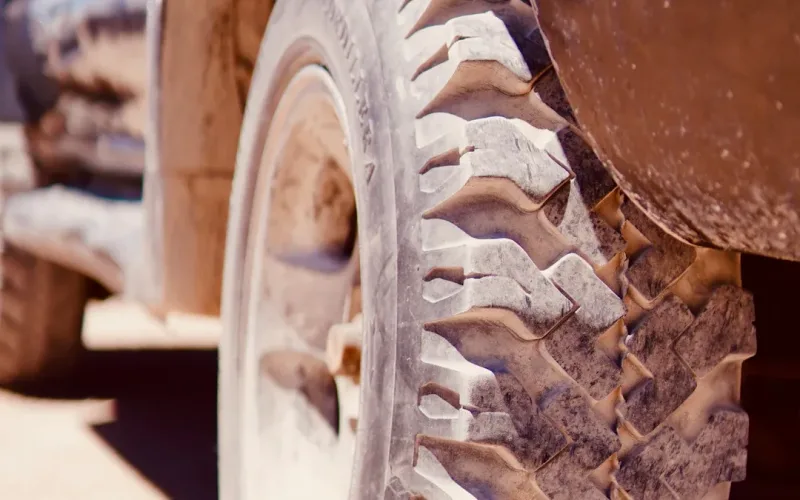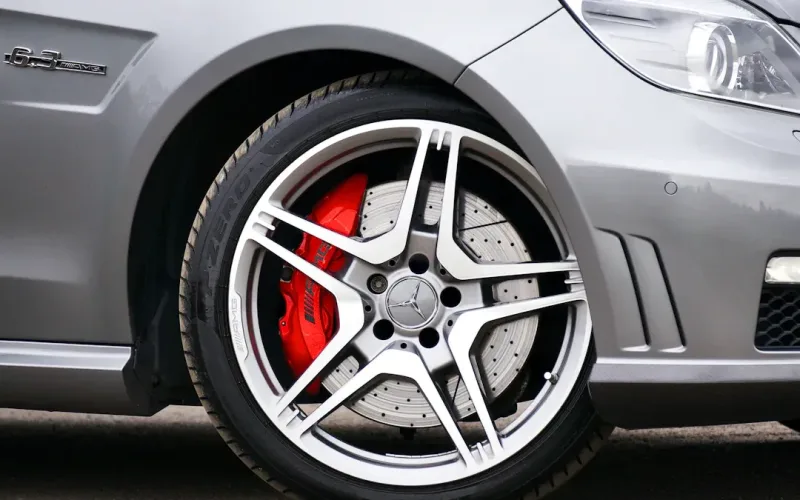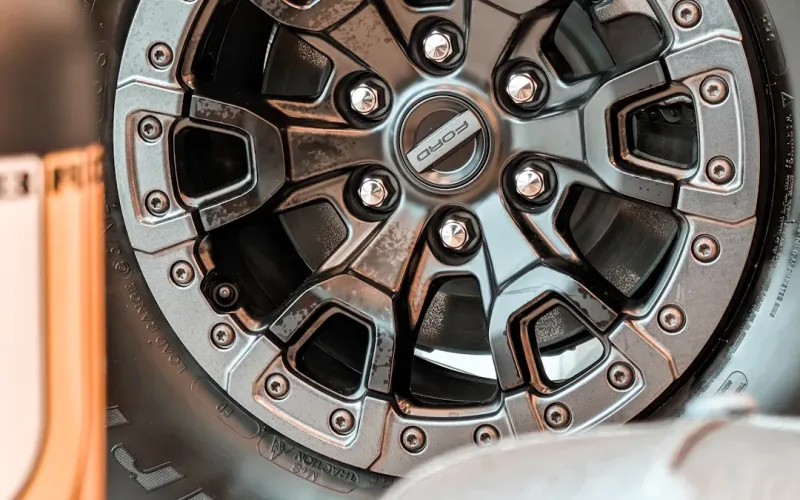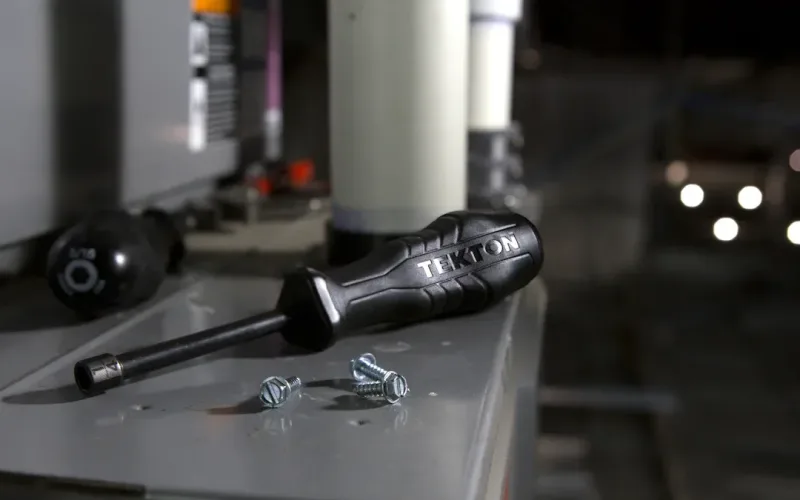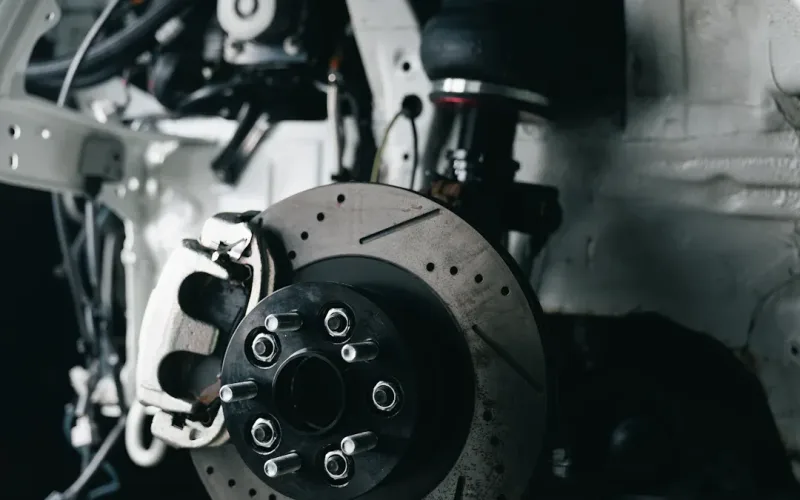

admin1
May 24, 2025
How to Find the Ideal Wheel Weight Kit for Your Vehicle in 2025
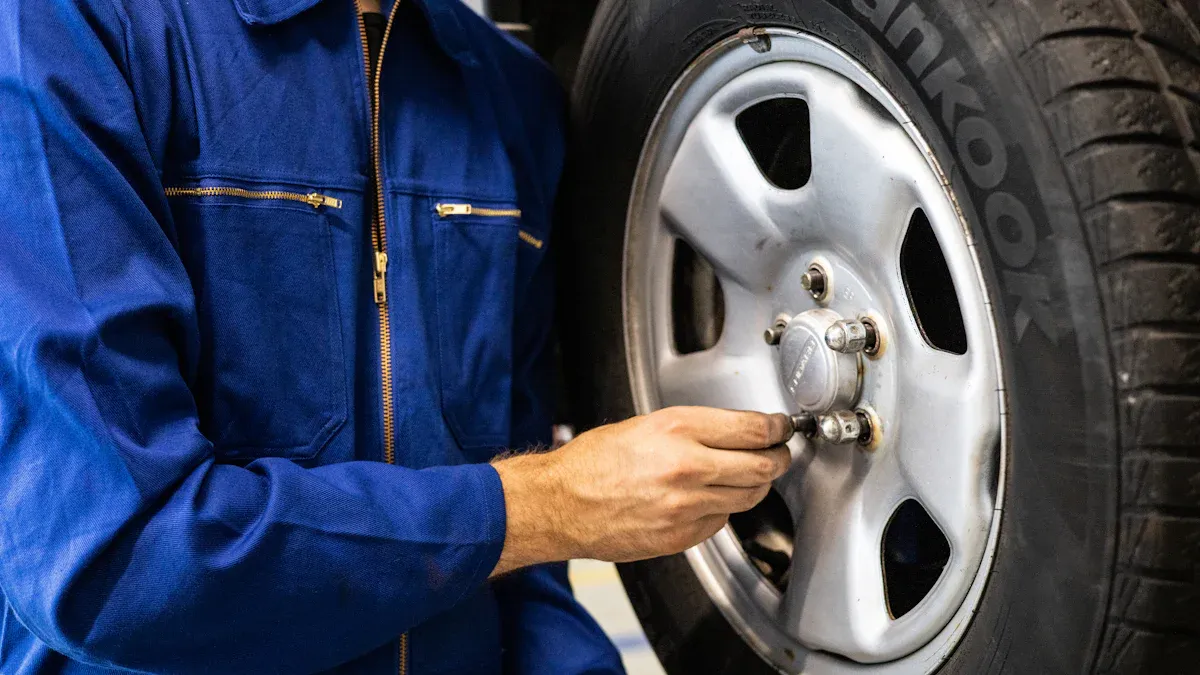
A wheel weight kit plays a crucial role in keeping your wheels balanced, ensuring smooth and steady movement on the road. Balanced wheels improve your vehicle’s stability, especially during sharp turns and high-speed driving. They also optimize traction, reduce skidding risks, and enhance braking efficiency for safer stops. Additionally, proper weight distribution minimizes tire stress, increasing their lifespan and boosting overall safety.
In 2025, advancements in wheel weight materials and technology have revolutionized the automotive industry. The global clip-on balance weight market, valued at $367 million, is growing at a steady rate of 4.3% annually. This growth reflects a rising demand for better automotive safety and fuel efficiency alongside innovations in wheel balance solutions.
Importance of Wheel Weights
Why Balanced Wheels Matter
Balanced wheels are essential for maintaining your vehicle’s performance and safety. When your wheels are properly balanced, they distribute weight evenly across the tires. This ensures smoother rides, better handling, and improved fuel efficiency. Balanced wheels also reduce vibrations, which can make driving more comfortable and less tiring.
Unbalanced wheels, on the other hand, can cause uneven tire wear. This not only shortens the lifespan of your tires but also affects your vehicle’s stability. Regular wheel alignment and balancing checks help prevent these issues, ensuring your vehicle operates at its best.
Tip: Removing just one pound of unsprung weight from your wheels can feel like removing ten pounds of sprung weight. This significantly improves acceleration, braking, and handling.
Effects of Unbalanced Wheels on Performance and Safety
Unbalanced wheels can negatively impact your vehicle in several ways. They create noticeable vibrations, especially at high speeds, which can make driving uncomfortable and even dangerous. These vibrations can also strain your vehicle’s suspension and steering components, leading to costly repairs.
Uneven tire wear is another common issue caused by unbalanced wheels. Tires that wear unevenly lose traction, making it harder to stop or steer your vehicle safely. This can increase the risk of accidents, especially in wet or icy conditions. Additionally, unbalanced wheels increase rolling resistance, which reduces fuel efficiency and raises your fuel costs.
- Key Impacts of Unbalanced Wheels:
- Reduced tire lifespan due to uneven wear.
- Increased fuel consumption from higher rolling resistance.
- Decreased vehicle stability and handling.
- Greater risk of accidents caused by poor traction.
Benefits of Using the Right Wheel Weight Kit
Using the right wheel weight kit ensures your wheels stay balanced, which directly improves your vehicle’s performance and safety. Wheel weights counteract any imbalances in your tires, allowing for smoother rides and better control. This is especially important for high-speed driving, where even minor imbalances can cause significant issues.
Properly balanced wheels also enhance fuel efficiency by reducing rolling resistance. This not only saves you money but also reduces your vehicle’s environmental impact. Additionally, balanced wheels extend the lifespan of your tires, saving you from frequent replacements.
| Benefit | Explanation |
|---|---|
| Improved Stability | Balanced wheels ensure equal force distribution, enhancing vehicle control. |
| Extended Tire Lifespan | Even wear reduces the need for frequent tire replacements. |
| Better Fuel Efficiency | Lower rolling resistance means less energy is needed to move the vehicle. |
| Enhanced Comfort | Reduced vibrations make driving smoother and more enjoyable. |
By investing in high-quality automotive wheel weights, you can avoid the problems caused by unbalanced wheels. Regular maintenance, including wheel alignment and balancing, ensures your vehicle remains safe and efficient on the road.
Types of Wheel Weight Kits
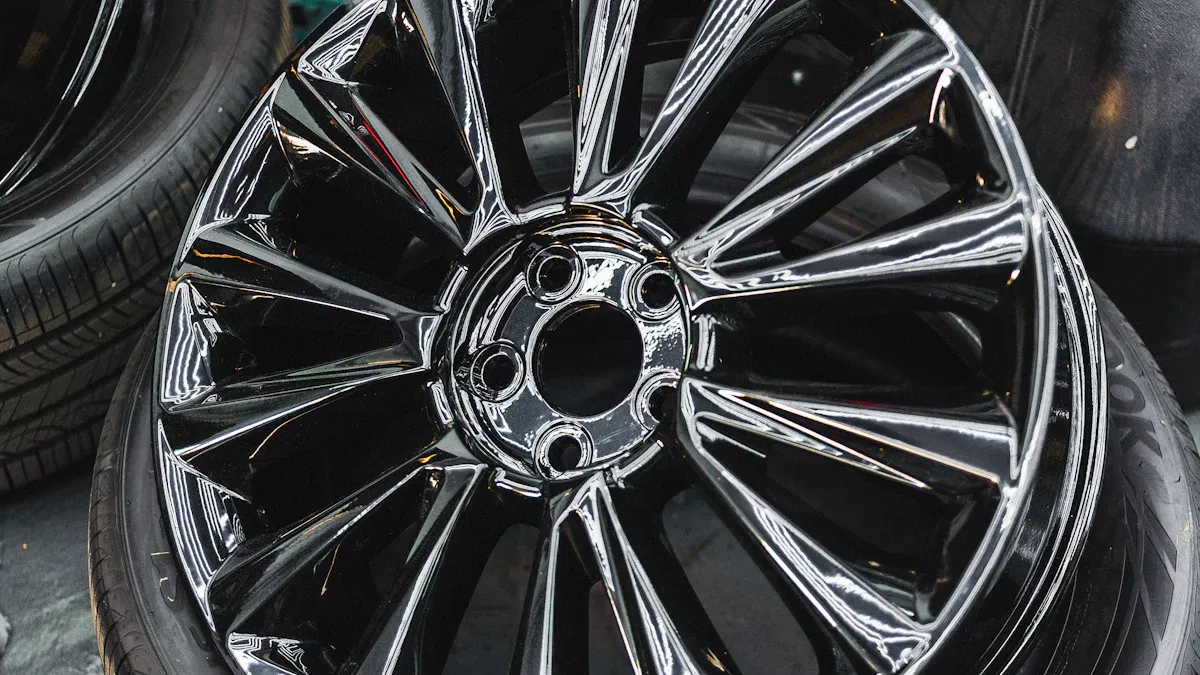
Clip-On Weights
Clip-on wheel weights are a popular choice for balancing wheels. These weights attach directly to the rim using a clip mechanism, making them secure and reliable. You’ll often find them on steel rims, as their design fits snugly onto the edge of the wheel. Their durability makes them ideal for vehicles that frequently encounter rough terrain or high-speed driving.
The performance of clip-on wheel weights depends on their material composition. Studies show that adding 2% tin to the alloy results in an optimal balance of 2.71% tin and 2.85% antimony. This combination enhances the strength and flexibility of the weights, ensuring they remain effective under various conditions.
Tip: When you choose a wheel balance weight for your vehicle, consider the rim type and driving conditions. Clip-on weights work best for rims with compatible structures.
Stick-On Weights
Stick-on wheel weights offer a versatile solution for balancing wheels. These weights use adhesive backing to attach directly to the inner surface of the rim. Their slim profile makes them suitable for alloy wheels, where aesthetics matter. You’ll appreciate their ability to provide precise balance without altering the appearance of your wheels.
Stick-on wheel weights are particularly useful for vehicles with unique rim designs or limited space for traditional clip-on weights. However, proper installation is crucial. The adhesive must bond securely to the rim to prevent the weights from detaching during use. Regular inspections help ensure they stay in place and maintain balance.
Choosing the Right Type for Your Vehicle
Selecting the most suitable wheel balance weight depends on several factors. Different vehicles require specific types of weights based on their wheel size, weight, and design. For example, larger wheels may need heavier weights to achieve proper balance, while high-speed vehicles demand precise balancing for stability.
| Criteria | Description |
|---|---|
| Vehicle type and model | Different vehicles have varying wheel sizes, weights, and designs, necessitating specific wheel weights. |
| Wheel size and weight | Larger and heavier wheels may need more or larger weights for proper balance. |
| Balance accuracy requirements | High-speed or stability-demanding vehicles require precise balance, influencing weight selection. |
| Material of wheel weights | Options include lead (heavy, high density), zinc (lighter, decent balance), and steel (cost-effective). |
| Installation method | Adhesive weights suit specific surfaces, while clip-on weights fit wheels with compatible structures. |
When you choose a suitable wheel balance weight, consider the installation method. Clip-on wheel weights work well for steel rims, while stick-on wheel weights are better for alloy wheels. Matching the weight type to your vehicle ensures optimal performance and safety.
Materials for Wheel Weights
Steel: Durable and Cost-Effective
Steel is one of the most reliable materials for wheel weights. Its durability makes it resistant to wear and tear caused by road debris and extreme temperatures. This ensures that your wheels remain balanced for longer periods, reducing the need for frequent replacements. Steel also provides excellent weight distribution, which improves your vehicle’s handling and fuel efficiency.
Steel’s corrosion resistance adds to its longevity, even in harsh weather conditions. A study on JIS G-3141 steel highlights its ability to withstand environmental damage, making it a cost-effective choice for long-term use. Additionally, steel wheel weights are lead-free, eliminating health risks associated with lead exposure. Steel is also highly recyclable, conserving resources and reducing carbon emissions during production.
| Study Title | Key Findings |
|---|---|
| Corrosion Rate Analysis of JIS G-3141 Steel | Steel resists environmental damage, ensuring long-lasting performance. |
If you’re looking for a sustainable and durable option, steel wheel weights are an excellent choice. Their ability to maintain balance under various conditions makes them a favorite among drivers.
Zinc: Lightweight and Eco-Friendly
Zinc wheel weights offer a lightweight alternative without compromising performance. Their reduced weight makes them ideal for vehicles where minimizing unsprung weight is crucial. This can enhance acceleration, braking, and overall handling. Zinc is also eco-friendly, as it is non-toxic and recyclable, making it a safer option for the environment.
Zinc’s lightweight nature doesn’t sacrifice durability. It performs well under both static and dynamic loads, as shown in finite element analysis studies. These tests reveal that zinc can handle deformation, stress, and strain effectively, ensuring your wheels stay balanced over time. Its versatility makes it suitable for a wide range of vehicles, from compact cars to larger SUVs.
By choosing zinc wheel weights, you not only improve your vehicle’s performance but also contribute to a cleaner environment.
Lead: Traditional Material and Its Drawbacks
Lead has been a traditional material for wheel weights due to its high density and effectiveness in balancing wheels. However, its use has declined significantly because of its environmental and health risks. Lead emissions from wheel weights contribute to contamination of road dust and nearby ecosystems. The EPA estimates that 1.6 million pounds of lead tire weights are lost annually due to traffic, posing a significant threat to human health and the environment.
| Evidence Type | Description |
|---|---|
| Lead Emissions | Significant lead emissions impact human and environmental health. |
| Annual Lead Loss | 1.6 million pounds of lead tire weights are lost annually due to traffic. |
While lead wheel weights may still be available, their drawbacks outweigh their benefits. Opting for alternative materials like steel or zinc ensures better performance and reduces environmental harm.
Selecting the Right Wheel Weights
Choosing the correct wheel weight kit for your vehicle is essential for maintaining proper balance and ensuring optimal performance. By considering key factors like your vehicle type, wheel size, rim type, and material quality, you can make an informed decision that enhances safety and efficiency.
Factors to Consider for Your Vehicle
Every vehicle has unique requirements when it comes to wheel weights. The type of vehicle you drive, its weight, and its intended use all play a role in determining the most suitable wheel weight kit. For example, a compact car may require lighter weights, while an SUV or truck might need heavier options to achieve proper balance.
When selecting the right automotive wheel weights, you should also think about your driving conditions. If you frequently drive on rough terrain, durable materials like steel may be more appropriate. On the other hand, if you prioritize eco-friendliness, zinc weights could be a better choice. Matching the wheel weights to your vehicle’s specific needs ensures smoother rides, better handling, and longer-lasting tires.
Did You Know? Adhesive wheel weights now account for about 40% of the aftermarket, while clip-on weights hold approximately 60%. This shift reflects a growing preference for adhesive weights due to their ease of installation and compatibility with modern vehicles.
Matching Wheel Size and Rim Type
The size of your wheels and the type of rims they use are critical factors when choosing wheel balance weights. Larger wheels often require heavier weights to achieve proper balance, while smaller wheels may need lighter options. Additionally, the design of your rims determines whether clip-on or stick-on weights are more suitable.
Improperly matched wheel weights can lead to vibrations, uneven tire wear, and reduced performance. For instance, if your rims are not designed to accommodate clip-on weights, using them could result in poor balance and potential damage. Stick-on weights, with their adhesive backing, are often a better choice for alloy rims or wheels with unique designs.
- Key Considerations for Matching Wheels and Rims:
- Each wheel may require different amounts of weight for proper balance, especially if the tires and rims vary in quality.
- Balancing issues can occur if the rim design does not support the correct placement of weights, leading to vibrations.
- Tire and wheel combinations often need different weight corrections, highlighting the importance of matching components.
| Test Condition | Allowed Deformation/Cracks |
|---|---|
| Low Falling Height | Maximum deformation of 2.5 mm at the inner rim flange |
| High Falling Height | Cracks along a maximum of 25% of the wheel circumference at the rim allowed |
By carefully matching your wheel size and rim type with the appropriate wheel weight kit, you can avoid these issues and ensure a smoother, safer driving experience.
Evaluating Material and Brand Quality
The material and brand of your wheel weights significantly impact their performance and durability. High-quality materials like steel and zinc offer excellent balance and longevity, making them reliable choices for most vehicles. Steel is durable and cost-effective, while zinc provides a lightweight and eco-friendly alternative. Both materials are lead-free, which is better for the environment and your health.
When evaluating brands, look for manufacturers with a proven track record of quality and reliability. Reputable brands often adhere to strict manufacturing standards, ensuring their products perform well under various conditions. For example, Ningbo Fortune Auto Parts Manufacture Co., Ltd. produces premium wheel balance weights that undergo rigorous testing to meet international quality standards. Choosing a trusted brand ensures you receive a product that delivers consistent results.
Pro Tip: Always prioritize wheel weights that are tested for durability and performance. Inferior materials can lead to frequent replacements and higher long-term costs.
By focusing on material quality and selecting a reputable brand, you can invest in wheel weights that provide lasting value and superior performance.
Installation and Maintenance
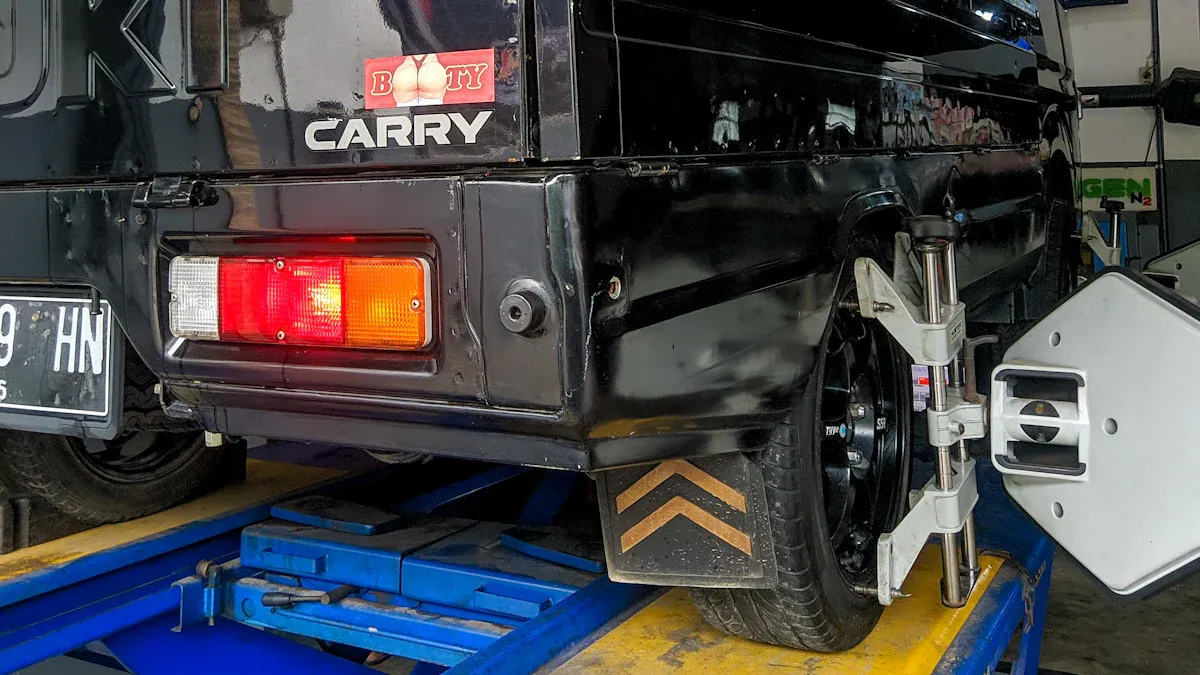
Proper Installation Techniques
Installing wheel weights correctly is crucial for maintaining proper balance and ensuring your vehicle performs at its best. You should always follow manufacturer guidelines to achieve accurate results. Start by cleaning the wheel surface thoroughly to remove dirt, grease, or debris. A clean surface ensures the weights adhere securely and stay in place during use.
When installing clip-on weights, position them carefully along the rim edge to avoid misalignment. For stick-on weights, press them firmly onto the inner rim surface after peeling off the adhesive backing. Use a rubber mallet or a similar tool to secure clip-on weights without damaging the rim.
To enhance the installation process, consider these best practices:
- Use conical seat lug nuts or bolts to prevent wheel loosening.
- Opt for tuner diameter or spline drive lug nuts for added security.
- Install hub-centric rings to align the wheel properly with the vehicle.
- Perform a test fit to check for clearance and ensure the weights do not interfere with other components.
Proper installation techniques not only improve balance but also extend the lifespan of your wheel weights.
Tips for Regular Inspections
Regular inspections help you maintain the effectiveness of your wheel weights. Check for any signs of wear, corrosion, or detachment during routine vehicle maintenance. Vibrations while driving may indicate that the weights have shifted or fallen off, requiring immediate attention.
Inspect the adhesive on stick-on weights to ensure it remains intact. If you notice peeling or weak adhesion, replace the weights promptly. For clip-on weights, verify that they remain securely attached to the rim. Loose weights can compromise balance and lead to uneven tire wear.
You should also monitor your tires for signs of imbalance, such as uneven tread wear or unusual noises. Addressing these issues early prevents further damage and keeps your vehicle safe on the road.
Ensuring Long-Term Performance
To ensure your wheel weights perform well over time, prioritize proper maintenance and care. Avoid exposing your wheels to harsh chemicals or abrasive cleaning tools, as these can damage the weights or their adhesive. Use mild soap and water to clean your wheels and weights gently.
Rebalancing your wheels periodically is essential, especially after replacing tires or experiencing significant impacts, like hitting a pothole. Regular rebalancing ensures your vehicle maintains optimal performance and safety.
Store spare wheel weights in a cool, dry place to preserve their quality. High temperatures or humidity can weaken adhesives and reduce the effectiveness of stick-on weights. By following these steps, you can maximize the lifespan of your wheel weights and maintain proper balance for years to come.
Future Trends in Wheel Weight Kits
Eco-Friendly Innovations
The automotive industry is moving toward eco-friendly solutions, and wheel weights are no exception. Manufacturers are focusing on lightweight materials like aluminum and alloys to reduce vehicle weight. Lighter vehicles consume less fuel and emit fewer greenhouse gases, making them more environmentally friendly. For example, aluminum alloy wheels not only enhance strength but also improve fuel efficiency by reducing the overall weight of the vehicle.
Projects like the Liberty Wheel initiative are paving the way for sustainable alternatives to traditional wheel designs. By collaborating with various stakeholders, this project aims to minimize the environmental impact of wheel weights. Companies like Wheel Pros are also leading the charge by developing products that lower fuel consumption and emissions. Their innovative designs use lightweight materials to achieve a better strength-to-weight ratio, which directly benefits both performance and the environment.
Note: Choosing eco-friendly wheel weights not only helps the planet but also improves your vehicle’s efficiency and reduces long-term costs.
Advanced Balancing Technologies
Advancements in balancing technologies are transforming how wheel weights are used. Dynamic wheel balancers now assess imbalances across multiple axes, ensuring smoother operation at higher speeds. Road force tire balancers simulate real-world conditions to identify issues like tire uniformity and wheel runout. These technologies provide more precise results compared to traditional methods.
Automated balancing systems are another breakthrough. They reduce manual labor and human error, making the balancing process faster and more accurate. These systems detect imbalances that static balancers might miss, improving service quality and customer satisfaction. For example, automated systems can quickly identify the exact placement of wheel weights, ensuring optimal balance for your vehicle.
| Technology Type | Benefits |
|---|---|
| Dynamic Wheel Balancer | Ensures smooth operation by addressing imbalances across multiple axes. |
| Road Force Tire Balancer | Identifies tire and wheel issues under simulated road pressure. |
| Automated Balancing Systems | Minimizes errors, speeds up the process, and enhances service quality. |
By adopting these advanced technologies, you can achieve better balance, improved safety, and a more comfortable driving experience.
Trends in Material Development
Material innovation is shaping the future of wheel weights. Manufacturers are exploring composites and advanced adhesives to enhance durability and efficiency. These materials not only improve the performance of wheel weights but also make them more resistant to wear and environmental factors.
The Global Car Wheel Balancing Weight Market Research Report highlights the growing use of composites in wheel weights. These materials offer a perfect balance of strength and flexibility, ensuring long-lasting performance. Additionally, adhesives are becoming more advanced, providing stronger bonds that keep stick-on weights securely in place.
| Report Title | Key Findings |
|---|---|
| Global Car Wheel Balancing Weight Market Research Report | Composites and adhesives enhance durability and efficiency of wheel weights. |
| Automotive Wheel Weight Market Report 2025 | Discusses growth opportunities and advancements in manufacturing processes. |
As the demand for lightweight and durable materials increases, you can expect wheel weights to become even more efficient and environmentally friendly. These innovations ensure that your vehicle remains balanced while meeting modern performance and sustainability standards.
Choosing the right wheel weights for your vehicle ensures optimal balance, safety, and performance. By understanding the types of wheel weights, their materials, and how they match your wheel size and rim type, you can make informed decisions. Proper balance reduces vibrations, extends tire life, and improves fuel efficiency. Staying updated on advancements in wheel weight technology helps you take advantage of eco-friendly materials and innovative balancing methods. Regular maintenance and inspections keep your wheels balanced and your vehicle running smoothly.
FAQ
What are wheel weights, and why do you need them?
Wheel weights are small components that balance your vehicle’s wheels. They prevent vibrations, improve handling, and reduce uneven tire wear. Balanced wheels also enhance fuel efficiency and ensure a smoother, safer driving experience.
How often should you check your wheel weights?
Inspect your wheel weights during routine tire maintenance or every 6,000 to 8,000 miles. If you notice vibrations, uneven tire wear, or reduced handling, check them immediately. Regular inspections ensure your wheels stay balanced and perform optimally.
Can you install wheel weights yourself?
Yes, you can install wheel weights if you have the right tools and follow the manufacturer’s instructions. However, professional installation ensures precise placement and better results. Incorrect installation may lead to imbalance and reduced performance.
Are stick-on weights better than clip-on weights?
Stick-on weights work best for alloy wheels and vehicles where aesthetics matter. Clip-on weights are ideal for steel rims and rough driving conditions. Choose based on your rim type and driving needs for optimal performance.
How do eco-friendly wheel weights benefit you?
Eco-friendly wheel weights, like those made from zinc or steel, reduce environmental harm. They are lead-free, recyclable, and safer for your health. By choosing these, you contribute to sustainability while maintaining your vehicle’s balance and performance.
